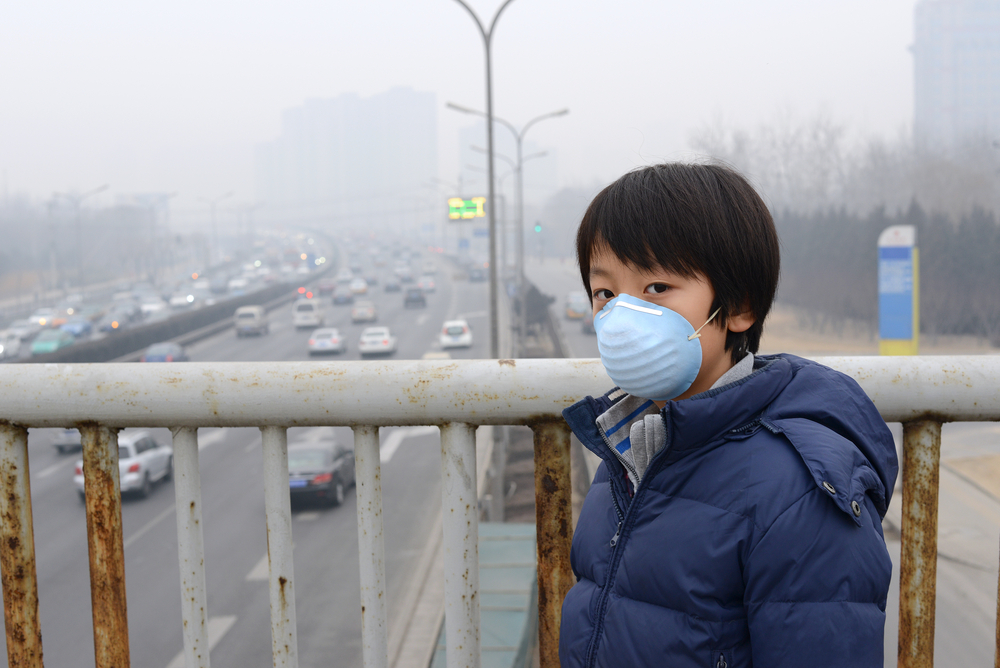Trash Talk
ELGi’s air compressors serve multiple functions in Beijing

On a chilly Monday morning in November 2016, India’s capital, New Delhi, woke up to a thick blanket of smog, tinging the city with a murky gray hue. The Government of India declared an emergency in the capital. Schools were closed, construction activities suspended, power plants shut down and citizens advised to stay indoors. With concentrations of over 16 times the prescribed limit, the air carried the notorious PM 2.5 pollutants. These tiny particles can penetrate and clog the lungs and also breach the blood-brain barrier, causing adverse health hazards.
This is not the first time an Asian country has had to roll out emergency measures and issue a ‘Red Alert’ on account of air pollution. Beijing, China’s capital city, has made its way to global headlines for several years and is cited to have the poorest air quality in the world. Although, researchers believe that New Delhi may have surpassed its Asian counterpart in 2016.
The key factor contributing to Beijing’s pollution is coal consumption. The city relies heavily on electric heat generated from coal power plants. Especially in winter, the peculiar geography of Beijing further aggravates the dismal air quality. Surrounded by mountain ranges, a phenomenon known as ‘inversion’ is at play. A layer of cold air settles on top of a warmer air mass, trapping the pollutants inside.

Beijing’s population of over 21 million people deals with crippling, dense smog – routinely disrupting schedules and regular functioning of schools and businesses. The sight of rows of pedestrians wearing masks is disturbingly customary. “It’s the kind of air that seems to have a thickness to it, like the dense fog in an airport smokers’ cubicle. It sticks in the back of your throat, and if you blow your nose at the end of the day, it comes out black.” described Guardian reporter, Oliver Wainwright, in 2014 on his visit to Beijing.
While pollutants loom at large in the air, another issue rears its stinky head. China’s accelerated development leaves a colossal amount of trash in its aftermath. China does not export garbage because processing within the country is, unfortunately, the most economic option. Moreover, several first world countries are known to export garbage to the country. With paucity of land, the mounting heaps of garbage pose a complex environmental challenge for China.
In the Mentougou district of Beijing, a small power plant tackles both these problems in one masterstroke. This power plant utilizes an unusual source of fuel – garbage! Using the waste-to-energy technology, China has been setting up eco-friendly trash incinerators on the outskirts of Beijing. Solid waste is burnt in a combustion chamber and the heat is used to generate steam at high pressures. The steam drives turbines and produces electricity.
Trash incineration is a seemingly simple way of disposing waste and meeting energy demands at the same time. However, the glaring obstacle is getting rid of harmful pollutants released on combustion. The gases leaving the combustion chamber contain oxides of nitrogen (NOx) and dioxins. These noxious gases are directly related to cancer, acid rain and corrosion. Additionally, ash is the solid byproduct of combustion.
The Mentougou power plant has facilities to ensure that these pollutants do not aggravate the poor air quality. After treatment, the gases released from the plant have negligible levels of NOx and dioxins. The ash is collected in separators and recycled to produce building materials. ELGi’s air compressors are currently at work in the Mentougou plant, operating numerous pneumatic devices. They also supply compressed air to flush the ash collected by the separators, contributing to the efforts to improve air quality in Beijing.
The Central Government has taken various other measures to control the situation in Beijing. In an effort to reduce the number of vehicles on the roads, Beijing introduced a fleet of buses that runs on natural gas. Especially since 2014, certain preventive steps have yielded results. This includes the banning of heavily polluting factories, switching to low-carbon fuels, the replacement of thousands of exhaust-spewing vehicles with electric alternatives. In recent times, China has also adopted the strictest emission laws in the world.
With spreading awareness, every day more and more individuals are beginning to adopt a sustainable, responsible way of life. The present may be hazy but the future may not be bleak, after all.
Sources:
http://phys.org/news/2016-07-beijing-air-quality.html http://bigstory.ap.org/article/94ff8ea6cc094a31993fdffcffc38f66/beijing-says-air-quality-improved-first-half-2016
https://www.theguardian.com/cities/2014/dec/16/beijing-airpocalypse-city-almost-uninhabitable-pollution-china http://www.theglobeandmail.com/news/world/chinas-trash-is-taking-over/article24367032/






